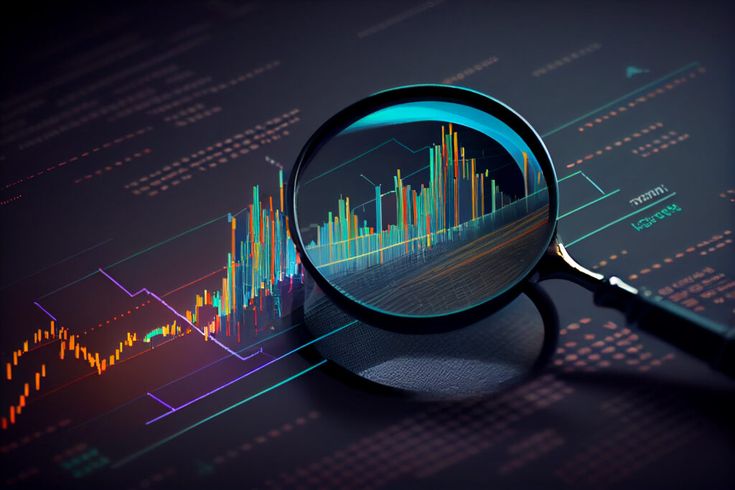Mục lục nội dung
Finding the perfect prop firm match has become one of the most important decisions a trader can make in 2025. With the industry evolving rapidly after the global restructuring of more than 80 prop firms in 2024, traders around the world are becoming more selective, more informed, and far more demanding about transparency, payout reliability, and the actual value a firm provides. A good match isn’t just about passing a challenge—it’s about creating a sustainable partnership that accelerates long-term trading performance.
As traders navigate a landscape shaped by AI-driven analytics, real-time transparency tools, and stricter regulatory scrutiny, the search for the right prop firm now requires deeper analysis than ever before. In this guide, we explore how to identify the ideal prop firm match, evaluate essential criteria, leverage modern tools, avoid hidden risks, and build a stable, scalable career with the firm that fits your trading DNA.
What Determines the Right Prop Firm Match for Your Strategy?

Every trader operates with a unique blend of risk tolerance, trading style, and behavioral patterns. That’s why a successful prop firm match starts with alignment. A firm designed for high-frequency traders, for example, may not serve a swing or position trader well—especially if weekend holding or news trading is restricted. The firm’s rules must complement how you trade, not force you to change a profitable system just to survive the evaluation.
In recent market trends, many traders have shifted toward firms that offer higher drawdown limits, no time pressure, and unrestricted trading styles. This shift reflects a broader understanding: a prop firm match must empower the trader instead of bottlenecking their strategy. Factors like asset variety, platform execution quality, and slippage behavior also play a role. Traders who rely heavily on metals or indices need firms with reliable liquidity providers, while algo traders require firms that allow automated systems.
Key elements that define fit include:
- Risk configuration: max drawdown, daily drawdown, and equity vs. balance tracking.
- Trading permissions: news trading, bot trading, weekend holding, and lot size flexibility.
When these foundational factors align, a trader can operate naturally, without battling restrictive rules that sabotage performance. That alignment is the heart of a true prop firm match.
How Do Transparency and Payout Reliability Affect Long-Term Success?

The 2024 shutdowns of major prop firms highlighted one truth: payout transparency determines trust. A prop firm match is never complete without evaluating payout reliability, stability of the firm’s business model, and the safekeeping of trader profits. Traders have increasingly prioritized firms that offer verifiable payout systems—often using blockchain receipts or public audit trails—and avoid those with mysterious processing delays or unclear liquidity structures.
Public sentiment around payout reliability has become a defining factor in 2025. Traders now seek firms with a track record of timely withdrawals, consistent communication, and clear documentation. A firm that provides blockchain-verified payouts or transparent reporting immediately stands out, as these systems reduce the risk of manipulation and confirm financial integrity in real time.
Long-term success depends on partnering with a firm whose payout operations are sustainable and scalable. It’s not simply about receiving profits today; it’s about ensuring that the firm will still be paying traders tomorrow. A strong prop firm match provides stability, clarity, and confidence—allowing traders to focus entirely on performance rather than worrying about whether payout requests will be honored.
Which Evaluation Models Suit Different Types of Traders?

The modern trader has more funding paths than ever: 1-phase evaluations, 2-phase challenges, and increasingly popular instant funding models. Each evaluation type offers advantages depending on your trading style, psychological comfort, and financial goals. A proper prop firm match starts with understanding which model aligns with your strengths rather than your hype-driven impulses.
The 1-phase model suits traders who want fast access to capital and who excel in early momentum. These traders typically have well-optimized systems, solid risk management, and the ability to deliver consistent returns without extended warm-up periods. The reduced complexity of a single evaluation often feels more natural to experienced traders.
The 2-phase model remains a strong fit for traders who value structure. Phase 1 allows for creative freedom within the profit target, while Phase 2 emphasizes discipline and stability—mirroring real-world fund management expectations. Many traders find that passing two stages reinforces psychological strength and comfort under pressure, making this model one of the most enduring.
Instant funding is ideal for traders who dislike evaluation stress and prefer immediate profit participation. While fees can be higher, the benefit lies in bypassing the emotional grind of challenges. The right prop firm match depends on choosing the model that fits your temperament and long-term trading trajectory, not the one that seems easiest upfront.
How Can AI and Analytics Improve Evaluation Success?
AI has become a dominant force in trading funding programs. Firms offering AI-powered coaching, automated trade journaling, and performance diagnostics give traders a significant advantage when attempting evaluations. An effective prop firm match should include tools that sharpen discipline, identify behavioral weaknesses, and provide objective insight into system performance.
AI coaching systems can analyze your trading history in real time, flagging issues like over-trading, poor position sizing, or emotional decision-making. These insights help traders pass challenges with fewer psychological mistakes. Meanwhile, AI journaling tools automatically record trade rationale, risk metrics, and pattern behavior—producing data that reveals gaps that human eyes often miss.
Additionally, traders using algorithmic systems or semi-automated strategies can harness AI to fine-tune parameters, optimize entries, and avoid conditions that historically lead to drawdowns. As these technologies evolve, firms offering AI support quickly become preferred choices, as they not only fund traders but actively improve their performance. A modern prop firm match should feel like a partnership, not a test.
What Hidden Rules and Red Flags Should Traders Watch For?
The “hidden rule problem” has shaped trader discussions throughout 2024–2025. Many firms advertise freedom but enforce strict internal policies that limit trader autonomy. A high-quality prop firm match requires clarity. Traders must examine rulebooks thoroughly and identify any policies that can invalidate payouts or cause sudden account termination.
Common red flags include inconsistent rule enforcement, trailing drawdowns disguised as fixed limits, strict consistency rules, or vague communication about liquidity providers. A trustworthy firm explains these factors openly, without ambiguity. Traders should also watch for firms that repeatedly change rules without notice or apply penalties unevenly across the community.
Signs of potential risk:
- Unclear payout timelines or constantly shifting requirements
- Restrictions on trading styles that contradict marketing claims
When traders understand the subtle risks and avoid firms with questionable practices, they improve their chances of finding a reliable, long-term prop firm match that supports sustainable growth.
What Metrics Should Traders Track After Getting Funded?
Passing a challenge is only the beginning. To maintain a strong prop firm match, traders must track performance metrics that support consistency, scaling, and capital growth. Modern funded traders are encouraged to monitor equity behavior, volatility exposure, and peak drawdown curves to maintain alignment with firm rules and personal risk profiles.
Post-funding success often depends on tracking metrics such as expectancy, weekly volatility, risk-adjusted return, and reaction time under stress. Traders who understand their numbers can adapt more efficiently, avoid compliance issues, and generate stable results that qualify them for scaling plans. This is where AI analytics again play a crucial role—providing numerical clarity and pattern recognition that manual journaling cannot deliver.
By measuring outcomes consistently, traders strengthen their relationship with the firm and reinforce long-term trust. A great prop firm match is not just about qualifying—it’s about thriving with the firm, scaling capital responsibly, and maintaining a professional trading rhythm.
Final Thoughts
In a fast-changing industry, the perfect prop firm match is the foundation of every successful trading career. As firms adopt AI, enhance transparency, and refine evaluation programs, traders must adapt by choosing partners that complement their trading systems, psychological tendencies, and long-term financial goals. A strong match is more than an evaluation—it is a strategic alliance built on clarity, trust, and performance.
If you’re aiming to scale aggressively, reduce risk, and build a stable trading path in 2025, finding the right prop firm match is no longer optional—it’s essential.













